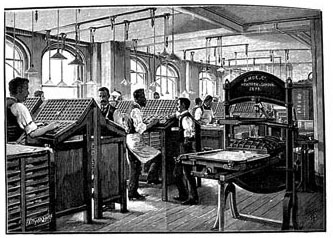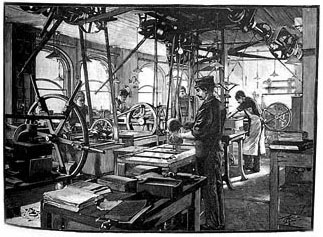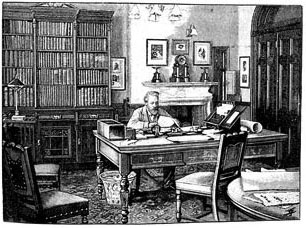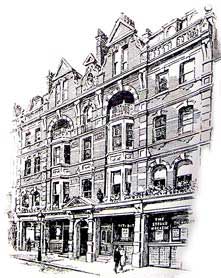|
The Strand Magazine's offices
on Southampton Street |
Popular literature, such as the Sherlock Holmes stories, came of
age along with another 19th-century innovation: the popular
magazine. Magazines had existed in some form since the 18th
century, but they had never been as cheap or as generally available.
This new medium demanded art forms that could be consumed in small
bites: on a train trip, or during a few leisure moments after a
busy day. In earlier times, literacy generally extended only as
far as the middle class, but, with the Education Act of 1870, elementary-school
education became compulsory across England. Changing labor laws
had given workers more leisure time and disposable income. Increased
train travel, especially the advent of daily commuting, triggered
a demand for light reading material. Typesetting, although still
a complex and labor-intensive technology, had improved to the point
where printing houses could mass-produce high-quality material that
included photographs and engravings. Finally, the onerous Stamp
Tax had been reduced, making printed material more widely affordable.
 |
 |
 |
Strand Magazine typesetters at work |
The Strand's electrotyping
room |
George Newnes, owner of The Strand
and Tit-bits |
Publishers quickly learned to target their
publications to the needs of particular segments of the population.
Working-class people with an elementary-school education read "penny
weeklies" such as Tit-bits, which contained short articles,
bits of interesting information (what we might call "sound-bites"),
and serialized stories. For the middle class, especially those with
intellectual aspirations, magazines provided more in-depth articles
on politics, science, history, economics, and the arts, as well
as fiction that appealed to slightly more developed tastes than
what appeared in Tit-bits. | 









